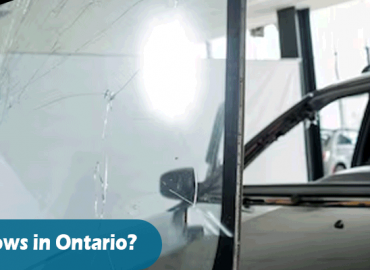You may have heard the buzz about ceramic coating, a special finish applied to a vehicle’s paintwork that is said to help protect it from scratches and other damage. But what exactly is a ceramic coating, and how effective is it at protecting your car?
For starters, ceramic tint is a type of resin-based product that forms a protective layer on the outside of your car. This layer helps protect against scratches, UV rays, and other environmental damage. But does this make it invincible? Let’s take a closer look at the durability of the coating so you can decide if it’s right for you.
What Is Ceramic Coating?
Have you ever heard of ceramic coating, but weren’t quite sure what it was? Don’t worry, you’re not alone in that! Ceramic coating is a liquid polymer applied to the exterior of a car that forms an incredibly strong and durable protective layer. It offers superior protection against scratches and paint damage due to its ability to repel water, oil, and debris from the surface. This can make your ride look like it just came off the lot even longer than normal.
When it comes to durability, ceramic window tint are among the best out there. They are incredibly resistant to scratches, ultraviolet rays, dust, dirt, and even acid rain. This means that your vehicle will stay looking clean and shining for years to come with very minimal maintenance required on your part.
The best part is, applying the coating is surprisingly easy compared to other forms of paint protection not only can it be done in only a few hours but also very affordable too. So if you’re looking for a way to keep your ride looking as good as new without breaking the bank. The ceramic coating could be just what you need.
What Affects How Easy Ceramic Coatings Scratch?
So you know that ceramic coating is generally pretty strong against scratches, but it’s not impervious. It’s important to understand the factors that can affect the scratch resistance of a ceramic coating.
Thickness
The thickness of the applied coating is one of the most important factors when it comes to scratch resistance. The thicker the layer, the more resistant the coating will be to scratches. The ceramic coating typically needs to be at least 2-3 mils thick for maximum performance and protection. So make sure your installer follows all specifications for the thickness of the product.
Number of coats
Applying multiple coats of ceramic can create an extra layer of protection and make your car even less likely to scratch. Having multiple coats also prevents any uneven wear on your car’s surface. Ensuring that your car is ready to take on anything with ease.
Quality of Product
Using a high-quality product is essential when it comes to creating an effective layer of protection against scratches. Not all ceramic coatings are created equal and purchasing a top-of-the-line product will ensure that your car has maximum scratch resistance and excellent durability.
These three factors are key in determining whether or not ceramic coating will stand up against scratches. So make sure you take them into consideration before deciding how best to protect your car from damage.
Ceramic Coating Scratch Resistance in Practice
You’re probably wondering how scratch-resistant ceramic coating is in practice. To put it simply, it can withstand some scratches but not all of them. As with any material or surface, scratches may occur with everyday use. But don’t worry the ceramic coating is much tougher than you think. It’s incredibly resistant to the usual suspects: minor scrapes and bumps, even UV fading and chemicals.
Scratch Resistance Tests
Scratch resistance tests give a better insight into the durability of a coating. Generally speaking, there are two types of tests used to measure scratch resistance abrasion and erosion tests. The abrasion test uses an abrasive foam pad with pressures ranging from 0.5 to 5.5 kg to make simulated scratches on the surface of the ceramic coating. For erosion testings, a ceramic-coated sample is exposed to acid solutions with various concentrations at different temperatures and time periods to simulate real-world exposure that materials usually have to endure in the field.
According to various research studies, coatings provide excellent protection against scratching and other damage caused by abrasion, though this varies depending on the type of substrate used and the type of coating applied to it. Generally speaking, ceramic coatings show good scratch resistance performance even after continuous or frequent contact with abrasive agents over long periods of time. So don’t worry about minor wear and tear.
Preventing Scratches in Ceramic Coatings
Let’s talk about the reality of ceramic coating durability. You might be wondering if the ceramic coating is easy to scratch.
The short answer is: it depends. The ceramic coating does need some protection from scratches and other types of damage but with the right maintenance. It can last for years. Plus, when applied correctly, coatings can be just as hard and resistant to scratches as any other top-grade car paint job.
To prevent scratches, you should:
- Regularly clean and wax your car to keep dirt, dust, and other debris away
- Avoid aggressive car washes that use brushes or other abrasive materials
- Park under cover or in the shade when possible to avoid direct exposure to the sun
- Use a microfiber cloth or a soft terry towel when drying your car after washing
- Look out for bird droppings or tree sap on the surface and remove any such deposits right away
Ceramic coatings offer greater protection than regular paints because they create an extra layer over existing paint. A layer that enhances your vehicle’s natural color and protects it from UV rays, oxidization, water spots, and external chemicals. With proper maintenance and care, this hard-wearing layer of protective coating will stand up against any minor scratches or accidental damage along the way.
Repairing Light Scratches in Ceramic Coatings
The good news is that coatings are very durable and light scratches can typically be repaired without too much hassle. That’s why they’re a great choice for protecting your car from minor everyday wear and tear. Plus, unlike traditional wax-based coatings, ceramic tint don’t need to be applied over and over again.
Repairing Light Scratches
So how do you repair light scratches in coatings? Well, it depends on the type of scratch. If the scratch is minor, such as a swirl mark or light hazing, a simple polishing may be enough. But if the scratch is deeper or has penetrated through the coating, a professional detailer may need to buff out the scratch with a light polishing compound or refinish the area with a fresh coating.
Ceramic coatings also offer superior protection against harsh environmental conditions that can cause fading, cracking, and oxidation. Conditions that traditional wax-based coatings can’t stand up to. So if you want to keep your car looking its best for longer, then investing in the coating is definitely the way to go.
Conclusion
In conclusion, ceramic coating is a great way to keep your car looking fresh and protect it from scratches, but it’s only as scratch-proof as you make it. This means regularly washing, waxing, and polishing your car and getting regular ceramic coating reapplications to keep your car looking great. It’s also important to avoid harsh chemicals and abrasives as these can degrade the ceramic coating, leaving your car susceptible to scratches and other damage. With the right care and maintenance, ceramic coating can keep your car looking sleek and shiny for years to come.




